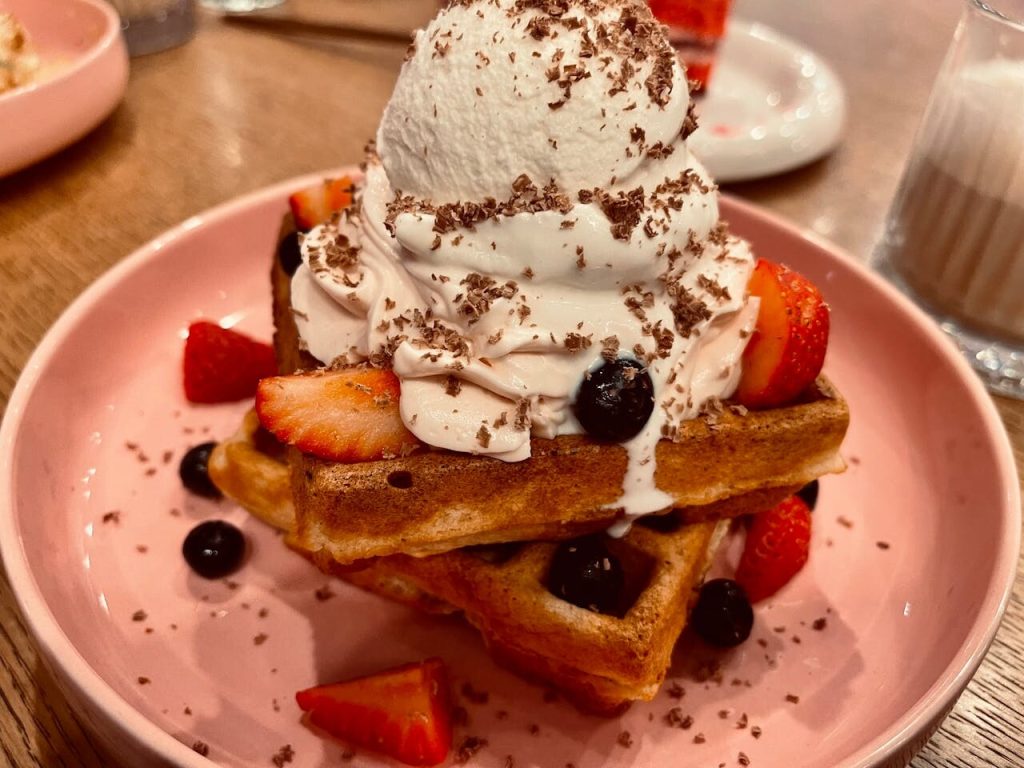Despite the removal of the uterus, it is still possible to develop endometrial cancer after a hysterectomy. While hysterectomy does reduce the risk of endometrial cancer, it does not eliminate it entirely. It is important for individuals who have had a hysterectomy to be aware of the risk factors and signs of endometrial cancer to ensure early detection and treatment.
Endometrial cancer after hysterectomy is a serious condition that can be life-threatening if left untreated. In this article, we will provide an overview of the risks and signs associated with endometrial cancer after hysterectomy. We will also discuss the available treatment options and the importance of follow-up care.
Key Takeaways:
- Endometrial cancer can still develop after a hysterectomy.
- It is important to be aware of the risk factors and signs of endometrial cancer after hysterectomy.
- Treatment options and follow-up care are crucial in managing endometrial cancer after hysterectomy.
What is Endometrial Cancer After Hysterectomy?
Endometrial cancer after hysterectomy refers to the development of cancerous cells in the lining of the uterus, or endometrium, after a hysterectomy procedure. A hysterectomy is a surgical procedure that involves the removal of the uterus, typically as a treatment for conditions such as fibroids, heavy bleeding, or uterine prolapse. While a hysterectomy removes the uterus, it does not necessarily remove all of the endometrium.
Endometrial cancer can develop in the remaining endometrial tissue, leading to the need for further treatment and monitoring. It is important to be aware of the risk of endometrial cancer after hysterectomy and to stay vigilant for any signs or symptoms.
Risk Factors for Endometrial Cancer After Hysterectomy
There are several risk factors for developing endometrial cancer after a hysterectomy. These include:
- Age: The risk of developing endometrial cancer increases as a person gets older.
- Hormone replacement therapy: Long-term use of estrogen without progesterone after menopause can increase the risk of endometrial cancer.
- Obesity: Being overweight or obese can increase the risk of endometrial cancer due to the extra fat cells producing estrogen.
- Genetic predisposition: Inherited gene mutations, such as Lynch syndrome, can increase the risk of endometrial cancer.
- History of endometrial hyperplasia: This condition causes abnormal cell growth in the lining of the uterus. Individuals with a history of endometrial hyperplasia are at increased risk for developing endometrial cancer.
Other factors that may increase the risk of endometrial cancer after a hysterectomy include radiation therapy to the pelvic area and a history of breast or ovarian cancer. It is important to note that even if a person does not have any of these risk factors, they may still develop endometrial cancer after a hysterectomy.
Signs and Symptoms of Endometrial Cancer After Hysterectomy
It is important for individuals who have had a hysterectomy to be aware of the signs and symptoms that may indicate the presence of endometrial cancer. Catching this type of cancer early can significantly improve the chances of successful treatment and survival.
Common signs and symptoms of endometrial cancer after hysterectomy include:
- Abnormal vaginal bleeding, such as bleeding between periods or after menopause
- Unusual vaginal discharge or discharge tinged with blood
- Pelvic pain or pressure
- Pain during sexual intercourse
- Changes in bowel or bladder habits, such as constipation, diarrhea, or frequent urination
If an individual experiences any of these symptoms, it is important to see a doctor right away. While these symptoms may be caused by conditions other than endometrial cancer, it is crucial to rule out the possibility of cancer and receive appropriate treatment.
According to Dr. Leigh Erin Connealy, founder of Cancer Center for Healing, “Early detection of endometrial cancer is key. Any unusual symptoms or changes in one’s health should be taken seriously and promptly addressed with a healthcare professional.”
Diagnosis of Endometrial Cancer After Hysterectomy
Diagnosing endometrial cancer after hysterectomy can be challenging, as the uterus is typically removed during the procedure. However, it is still possible for endometrial cancer to develop in the remaining tissue, such as the cervix or vagina.
To detect endometrial cancer after hysterectomy, a healthcare provider may use a combination of imaging tests, biopsies, and genetic testing. Imaging tests can include ultrasounds, CT scans, or MRIs to visualize the remaining tissue and look for any abnormalities. Biopsies may involve taking a sample of tissue from the cervix, vagina, or other areas. Genetic testing can also be used to identify specific gene mutations that may increase the risk of endometrial cancer.
If endometrial cancer is suspected, a healthcare provider will likely refer the individual to a specialist, such as a gynecologic oncologist, for further testing and evaluation.
Treatment Options for Endometrial Cancer After Hysterectomy
When endometrial cancer is detected after hysterectomy, treatment options will depend on several factors, including the stage of cancer, the individual’s overall health, and the likelihood of recurrence.
The primary treatment approach for endometrial cancer after hysterectomy is surgery. In cases where cancer is detected in the early stages, surgery may involve removing the remaining reproductive organs, such as the ovaries and fallopian tubes, along with any remaining cancerous tissue in the pelvis.
For cases where cancer has spread beyond the uterus, additional treatments may be necessary. Radiation therapy may be used to kill cancer cells or shrink tumors, while chemotherapy may be used to destroy cancer cells throughout the body. Hormonal therapy, which involves taking medications that alter hormone levels, may also be used to slow the growth of cancer cells.
In some cases, a combination of treatments may be recommended. For example, surgery followed by radiation therapy or chemotherapy may be used to reduce the risk of recurrence.
Hormonal Therapy for Endometrial Cancer After Hysterectomy
Hormonal therapy is a treatment approach that involves taking medications that alter hormone levels in the body. For women with endometrial cancer after hysterectomy, hormonal therapy may be used to slow the growth of cancer cells.
The medications used in hormonal therapy may include
| Medication Name | Function | Possible Side Effects |
|---|---|---|
| Tamoxifen | Blocks the effects of estrogen on breast tissue, which can help slow the growth of cancer cells. | Hot flashes, mood changes, nausea and vomiting. |
| Progesterone | Stimulates the growth of healthy endometrial cells, which can help prevent the growth of cancer cells. | Acne, bloating, weight gain. |
It is important to note that hormonal therapy may not be effective for all cases of endometrial cancer after hysterectomy and may have potential side effects.
Individuals considering hormonal therapy as a treatment option should discuss the benefits and risks with their healthcare provider.
Prognosis for Endometrial Cancer After Hysterectomy
The prognosis for individuals diagnosed with endometrial cancer after hysterectomy is dependent on several factors, including the stage of cancer at diagnosis, the individual’s overall health, and the effectiveness of treatment. Generally, the earlier the cancer is detected, the better the prognosis. According to the American Cancer Society, the five-year survival rate for endometrial cancer after hysterectomy is:
| Stage of Cancer | Five-Year Survival Rate |
|---|---|
| Stage IA | 95% |
| Stage IB | 90% |
| Stage II | 75% |
| Stage III | 50% |
| Stage IV | less than 20% |
It’s important to note that survival rates are estimates based on large populations and do not necessarily predict an individual’s outcome. The treating physician can provide more personalized information and guidance on the individual’s prognosis.
Risk Factors and Prevention of Endometrial Cancer After Hysterectomy
While there are certain risk factors for endometrial cancer after hysterectomy, there are also preventive measures that individuals can take to reduce their risk. Some of the most significant risk factors include obesity, a history of hormone replacement therapy, and genetic factors.
Obesity has been identified as a significant risk factor for endometrial cancer after hysterectomy. This is because excess fat tissue can increase the production of estrogen, which can stimulate the growth of cancer cells. Maintaining a healthy weight through diet and exercise can help reduce the risk of endometrial cancer after a hysterectomy.
Women who have a history of hormone replacement therapy may also be at increased risk for endometrial cancer after hysterectomy. This is because hormone therapy can increase levels of estrogen in the body, which can promote the growth of cancer cells. Individuals who have undergone hormone replacement therapy should speak with their doctor about monitoring for signs of endometrial cancer and taking steps to reduce their risk.
In addition to these factors, genetic predisposition can also play a role in the development of endometrial cancer after hysterectomy. Individuals who have a family history of endometrial or other types of cancer may be at increased risk and should speak with their doctor about genetic testing and monitoring.
There are several steps that individuals can take to reduce their risk of developing endometrial cancer after hysterectomy. Maintaining a healthy weight, avoiding hormone replacement therapy unless medically necessary, and undergoing regular cancer screenings and check-ups can all help to reduce the risk of endometrial cancer and ensure early detection if it does occur.
Preventive Strategies:
- Maintain a healthy weight through diet and exercise
- Avoid hormone replacement therapy unless medically necessary
- Undergo regular cancer screenings and check-ups
Hormonal Therapy for Endometrial Cancer After Hysterectomy
Hormonal therapy is a treatment option for individuals diagnosed with endometrial cancer after hysterectomy. This treatment approach involves the use of medications that block the effects of estrogen on cancer cells, thereby slowing or stopping their growth.
Hormonal therapy is typically used for individuals who have early-stage endometrial cancer that has a low risk of recurrence. It may also be used in combination with other treatments for more advanced cases of endometrial cancer.
The two types of hormonal therapy most commonly used for endometrial cancer are tamoxifen and progestin. Tamoxifen is a medication that blocks the effects of estrogen on breast tissue and is also effective in reducing the growth of estrogen-dependent endometrial cancer cells. Progestin, on the other hand, is a synthetic form of the hormone progesterone, which helps to counteract the effects of estrogen on the endometrial lining and may also slow the growth of cancer cells.
Hormonal therapy is administered orally, typically as a daily pill. Treatment duration can vary depending on the specific case and may range from several months to several years.
Like all cancer treatments, hormonal therapy can have potential side effects that should be carefully monitored. Common side effects of tamoxifen include hot flashes, vaginal dryness, and mood swings, while progestin may cause weight gain, fluid retention, and menstrual irregularities.
Overall, hormonal therapy is an effective treatment option for individuals with endometrial cancer after hysterectomy, particularly those with early-stage cancer and a low risk of recurrence. As with any cancer treatment, it is important to discuss the potential benefits and risks with a healthcare provider to determine the best approach for individual cases.
Follow-up Care for Endometrial Cancer After Hysterectomy
Individuals diagnosed with endometrial cancer after hysterectomy require careful and ongoing monitoring to ensure that any recurrence or complications are caught early. The American Cancer Society recommends that individuals who have been treated for endometrial cancer receive regular check-ups, including physical exams, pelvic exams, and imaging tests as needed.
The frequency of follow-up care appointments depends on various factors, such as the stage of cancer at diagnosis, the effectiveness of treatment, and the individual’s overall health. It is important to work closely with your healthcare provider to determine the best follow-up care plan for you.
In addition to medical follow-up care, individuals may benefit from counseling or support groups to manage the emotional and psychological impacts of a cancer diagnosis. The Cancer Center for Healing offers a range of holistic treatment modalities, including counseling services, to support individuals and their families on their cancer journey.
Survival Rates for Endometrial Cancer After Hysterectomy
The survival rates for individuals with endometrial cancer after hysterectomy can vary depending on several factors. One of the most significant factors is the stage of cancer at diagnosis. Those diagnosed at an early stage, when the cancer is limited to the uterus, have a much higher survival rate compared to those diagnosed at a later stage.
According to the American Cancer Society, the five-year survival rate for individuals diagnosed with stage I endometrial cancer after hysterectomy is approximately 95%. However, the survival rate drops to 69% for those diagnosed with stage II cancer, which has spread to nearby tissues or organs.
For individuals diagnosed with stage III and IV endometrial cancer after hysterectomy, the five-year survival rate is approximately 57% and 17%, respectively. These lower survival rates are due to the cancer spreading to distant organs or tissues beyond the pelvis.
It’s important to note that survival rates are just an estimate and can vary based on individual factors such as age, overall health, and response to treatment. Consulting with a healthcare provider and following a personalized treatment plan can help improve the chances of survival.
Endometrial Cancer Recurrence After Hysterectomy
Unfortunately, endometrial cancer can recur even after a hysterectomy. It is important to be vigilant in monitoring for any signs or symptoms of recurrence, such as abnormal vaginal bleeding or pelvic pain. Regular check-ups and testing are essential for early detection and treatment of recurrent cancer.
Treatment options for recurrent endometrial cancer may include surgery, radiation therapy, chemotherapy, or a combination of these approaches. Your healthcare provider will work with you to determine the most appropriate treatment plan based on the individual characteristics of your cancer.
Factors that may influence the likelihood of endometrial cancer recurrence after hysterectomy include the stage of the cancer at the time of initial diagnosis, the grade of the cancer cells, and whether or not cancer was detected in the lymph nodes during surgery.
Your healthcare provider will also monitor your overall health and well-being to ensure that any treatments you receive are well-tolerated and effective. It is important to maintain open communication with your healthcare provider and inform them of any new symptoms or concerns you may have.
While the possibility of endometrial cancer recurrence after hysterectomy can be concerning, it is important to remember that early detection and treatment can improve your chances of successful outcomes. Consistent monitoring and follow-up care can help detect any recurrent cancer as early as possible, allowing for prompt treatment and management of the cancer.
Holistic Treatment Modalities at the Cancer Center for Healing
At the Cancer Center for Healing, located in Irvine, CA, individuals have access to a range of holistic treatment modalities designed to complement traditional cancer care. Under the guidance of Dr. Leigh Erin Connealy, the Center’s team of integrative physicians, nutritionists, and support staff provides personalized care that addresses each patient’s unique needs.
The Center’s holistic approach to cancer care emphasizes the importance of addressing the whole person, not just the disease. This means providing support both during treatment and in the weeks, months, and years following recovery. Some of the holistic modalities offered at the Center include:
| Modality | Description |
|---|---|
| Acupuncture | Ancient Eastern practice using small needles to stimulate specific points on the body and promote healing and balance. |
| Mind-Body Medicine | Techniques such as meditation, mindfulness, and guided imagery used to promote relaxation and reduce stress. |
| Herbal Medicine | Use of natural plants and herbs to boost the immune system and promote overall health. |
| Nutritional Counseling | Tailored nutritional plans that address an individual’s specific dietary needs and promote overall wellness. |
| Oxygen Therapy | Use of supplemental oxygen to improve immune function and promote healing. |
| Intravenous Vitamin C Therapy | Use of high doses of vitamin C to strengthen the immune system and fight cancer cells. |
These holistic treatments can be used in conjunction with traditional cancer treatments to help alleviate side effects and improve overall quality of life. If you are interested in learning more about the Cancer Center for Healing or scheduling a consultation with Dr. Connealy, visit their website or call their office today.
Conclusion
Endometrial cancer after hysterectomy can present a significant health risk for individuals, and it is important to be aware of the potential for this condition. By understanding the risks and signs of endometrial cancer after hysterectomy, individuals can take proactive steps to monitor their health and detect any potential issues early on.
Diagnosis and treatment of endometrial cancer after hysterectomy can be complex, but there are a variety of effective options available. From surgery and radiation therapy to hormonal treatments and holistic modalities, individuals have access to a range of treatment approaches to manage and treat endometrial cancer.
Prevention is also a critical factor in managing endometrial cancer after hysterectomy. By maintaining a healthy lifestyle and undergoing regular check-ups and monitoring, individuals can take proactive steps to reduce their risk of developing endometrial cancer in the first place.
The Cancer Center for Healing
For individuals seeking a comprehensive approach to cancer care, the Cancer Center for Healing offers a range of holistic treatment modalities under the guidance of Dr. Leigh Erin Connealy. From nutritional counseling and detoxification programs to acupuncture and meditation, the Cancer Center for Healing provides a supportive and nurturing environment for individuals looking to manage their health and wellness.
To learn more about the Cancer Center for Healing and schedule a consultation with Dr. Leigh Erin Connealy, please visit their website or contact them directly.
FAQ
Q: What is endometrial cancer after hysterectomy?
A: Endometrial cancer after hysterectomy refers to the occurrence of cancer in the endometrial lining of the uterus even after the removal of the uterus through a hysterectomy. Despite the removal of the uterus, some individuals may still develop endometrial cancer.
Q: What are the risk factors for endometrial cancer after hysterectomy?
A: Several risk factors contribute to the development of endometrial cancer after hysterectomy. These include aging, hormone replacement therapy, obesity, genetic predisposition, and certain medical conditions such as diabetes and polycystic ovary syndrome.
Q: What are the signs and symptoms of endometrial cancer after hysterectomy?
A: Common signs and symptoms of endometrial cancer after hysterectomy include abnormal vaginal bleeding, pelvic pain, changes in bowel or bladder habits, and unexplained weight loss. It is important to be vigilant and seek medical attention if any of these symptoms occur.
Q: How is endometrial cancer after hysterectomy diagnosed?
A: The diagnosis of endometrial cancer after hysterectomy typically involves imaging tests such as ultrasounds and CT scans, as well as biopsies to collect tissue samples for examination. Genetic testing may also be performed to determine the specific characteristics of the cancer.
Q: What are the treatment options for endometrial cancer after hysterectomy?
A: Treatment options for endometrial cancer after hysterectomy may include surgery to remove any remaining cancer cells, radiation therapy to target and destroy cancer cells, chemotherapy to kill cancer cells throughout the body, and hormonal therapy to block the growth of cancer cells.
Q: What is the prognosis for endometrial cancer after hysterectomy?
A: The prognosis for individuals with endometrial cancer after hysterectomy depends on various factors, including the stage of the cancer at diagnosis, the individual’s overall health, and the effectiveness of treatment. Regular follow-up care and early detection play a crucial role in improving prognosis.
Q: How can endometrial cancer after hysterectomy be prevented?
A: There are preventive measures individuals can take to reduce the risk of developing endometrial cancer after hysterectomy. These include maintaining a healthy weight, exercising regularly, avoiding hormone replacement therapy, and discussing any concerns with a healthcare professional.
Q: What is hormonal therapy for endometrial cancer after hysterectomy?
A: Hormonal therapy is a treatment approach that involves the use of medications to block the effects of hormones and prevent the growth of cancer cells. It may be recommended for individuals with endometrial cancer after hysterectomy, depending on their specific situation and hormone receptor status.
Q: What is the recommended follow-up care for endometrial cancer after hysterectomy?
A: Regular follow-up care is essential for individuals diagnosed with endometrial cancer after hysterectomy. This typically involves frequent check-ups, imaging tests, and ongoing monitoring to detect any signs of recurrence or complications early on.
Q: What are the survival rates for endometrial cancer after hysterectomy?
A: Survival rates for endometrial cancer after hysterectomy vary depending on multiple factors, including the stage of cancer at diagnosis, the individual’s overall health, and the effectiveness of treatment. It is important to discuss prognosis and survival rates with a healthcare provider.
Q: Is endometrial cancer recurrence possible after hysterectomy?
A: Yes, endometrial cancer recurrence is possible after hysterectomy. Regular monitoring and follow-up care are crucial in detecting any signs of recurrence. Treatment options for recurrent endometrial cancer may include additional surgery, radiation therapy, chemotherapy, or targeted therapies.
Q: What holistic treatment modalities are available at the Cancer Center for Healing?
A: The Cancer Center for Healing, located in Irvine, CA, offers a range of holistic treatment modalities for individuals with cancer. Under the guidance of Dr. Leigh Erin Connealy, they provide comprehensive care that integrates conventional and alternative therapies to support overall health and well-being. To schedule a consultation, please contact the Cancer Center for Healing directly.






